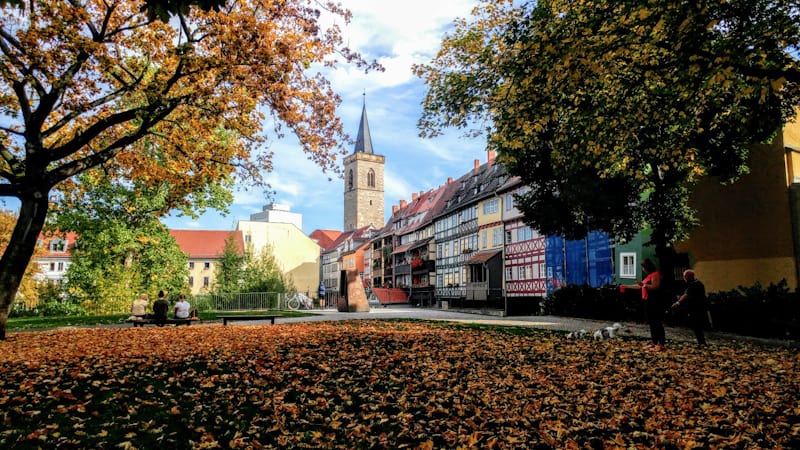
By Christopher Ludgate
GoNOMAD Senior Writer
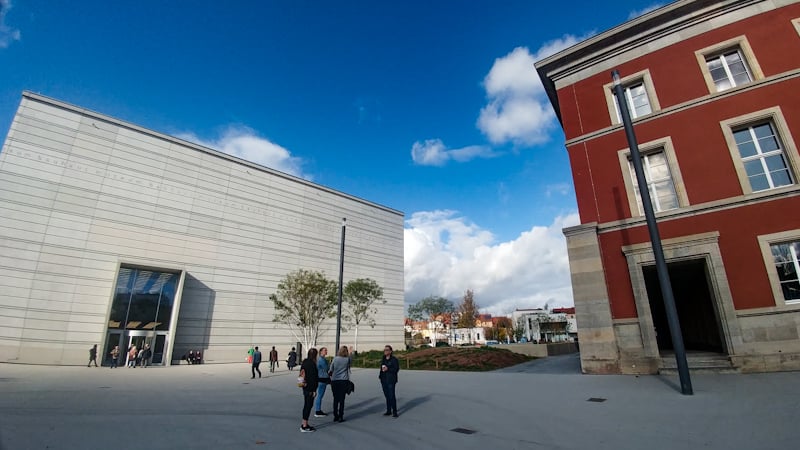
Racing on the Autobahn past Heidelberg through Thuringia and Saxony-Anhalt some friends and I began our immersive quest to explore the Bauhaus movement’s art and culture.
Staggered visions of former East Germany’s villages, lush fields, and windmills appeared like expressionistic paintings from behind the windshield. Ahead of us on our road-tripping adventure was a deep dive into Bauhaus including the new museum in Weimar, the birthplace of Bauhaus 100 years ago.
Further on our extensive tour, notable cities that comprise BauhausLand offered a peek beneath the surface into the intriguing modern movement.
Bauhaus in a Nutshell
“How will we live, how will we settle, what form of community do we want to aspire to,” were the questions Walter Gropius, architect and founder of the Bauhaus school, posed in a 1924 speech.
As the pace of everyday life was accelerating in the industrial revolution, new ideas began to flourish. Gropius had his finger on the pulse of Germany at that time. Simplicity and functionality without embellishment was the foremost creed when it came to Bauhaus ideas.
The simplicity can be seen to be reflected in the term which translates into build (bau) + house (haus) in German.
“But Walter Gropius named it after the medieval trade school back in the day of building cathedrals. The schools were referred to as “Bauhütte” – literally meaning the shack on the building site,” Jayne informed.
Unpretentious style and modern materials were the new reality for the transforming modern-era lifestyle. Gone by the wayside was the fancy ornate stuff as we would discover in the new Weimar showcases which explore the movement’s philosophy and its innovative clever household crafts and modular block-like architecture.

The exhibits and historic sites would sometimes delve into the deeper schism between the impractical tradition and the simplified modern ideas in a postwar society that was in great need of new affordable housing.
The ‘form follows function’ mantra was proposed not only for design but as a new fresh way to approach life. We got to go inside some of these original houses to get a feel of the Bauhaus way.
Bauhaus Building Blocks
While strolling in Weimar, it was like experiencing history in virtually every step with the city’s many UNESCO sites. The city is long known as a veritable major cultural hub. Its fostering of numerous classic artists, composers, and writers continued into the avant-garde movement with the founding of Walter Gropius’ Bauhaus School in 1919.
Weimar’s new Bauhaus Museum opened recently celebrating the 100 year anniversary of the movement. High-tech interactive mingles with old-school tradition here. A dedicated app is available to guide visitors, but my colleagues and I were fortunate enough to have Weimar expert, Jayne Obst, guide us.
The new museum’s stark monolithic design by architect Heike Hanada stands watch, seemingly hovering just slightly above its close neighboring former Nazi administrative buildings. It was a stunning contrast to behold. But these relics are not an anomaly throughout Germany.
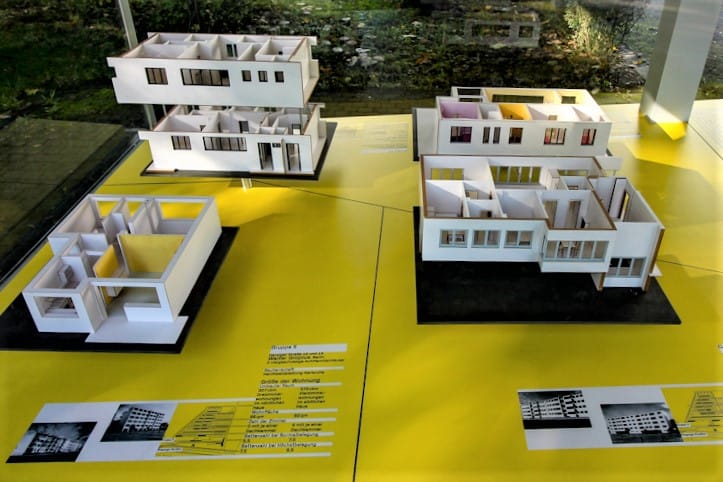
Essentially a showcase incorporating tech and hands-on interaction in addition to the innovations of the world’s oldest Bauhaus collection, the goal of the museum is to “highlight the early phase of the most influential school of art and design of the 20th century, tying its history to questions of how we envision our living environment today and in the future,” the welcome sign informs.
The ubiquitous shape and color symbolism like red squares, blue circles, and yellow triangles, all were used to signify balance and connection with nature and the elements. An epitomized piece would be the cradle on display in the museum. If you’ve ever been to an IKEA, you’ve seen some streamlined Bauhaus influenced designs. The gift shop has a cool selection of Bauhaus crafts, art, and books.
The New Neues Museum
Across the street, inside the grand looking Neues Museum, formerly the Grand Ducal Museum which was built in 1869, Jayne guided us with a deep dive into the new tech-inclusive exhibit that connects all the dots from modernism’s birth to the birth of the Bauhaus in the 1910s when new controversial fine art techniques were on the rise.
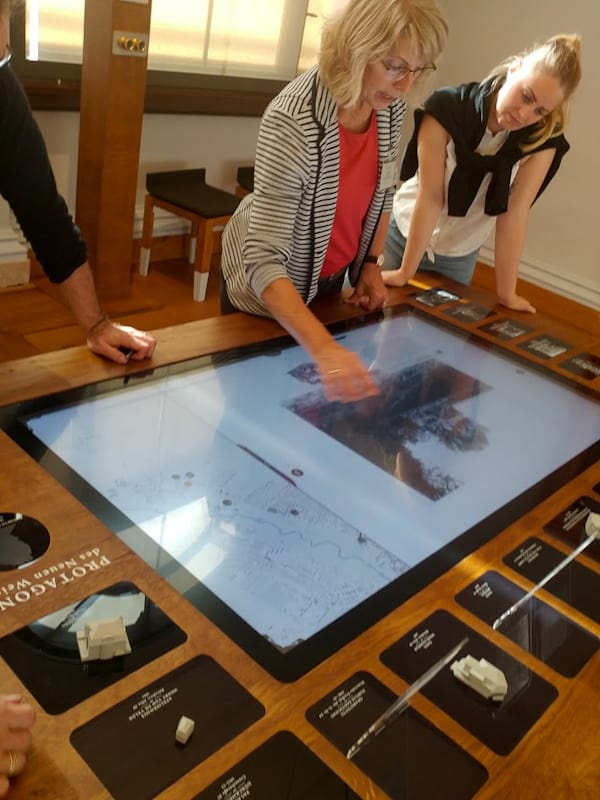
It was an insightful tale of traditional elitists vs. the avant-garde proponents, one being instrumental Henry von de Velde with his flourishing Weimar Painting School and controversial gallery shows.
Using the visually geared interactive educational tools, Jayne drew a very enlightening picture of their contentious clashes about the direction of art and culture.
Radical Ideas
Accessible to all visitors, the touch-screen materials reveal informative stories, whether linear or specific in focus. We got some interesting tidbits about Nietzsche, one of those notable Weimar writers, before heading to his dedicated exhibit which included a surreal collection of Nietzsche statues and one of the oldest copies of his famous Also Sprach Zarathustra.
In another exhibit, we explored the evolution where grand ornate furnishings to the more practical ones revealed the seedlings of the Bauhaus mindset. The interactive game there tested our speed as we raced the clock to knock off the relentless ornate designs from the models on the screen. And quite aggressively, I might add!
At the end of our tour in the Neues exhibit, we left with a fascinating, more in-depth understanding and an intriguing glimpse of the socio-political climate that inspired so much progressive ideology that would soon shake up the world with its modern-age thinking.
Grasping Gropius
As we poked around in his office within the still thriving Bauhaus school in Weimar, we got a feel of the master’s spatial design ideas. When Walter Gropius opened the Bauhaus school in 1919, its most defining feature was its radical ideas. The Bauhaus aimed to reform artistic education. Trades and crafts formed the basis of the curriculum and largely still do.
We made our way through Theater Square, past Friedrich Schiller’s old residence, snacking on local baked goods through the markets, and marched on to Weimar’s beautifully scenic Park Ander Ilm en route to Haus Am Horn, Gropius’ first realized Bauhaus model house circa 1923.
“The school was embraced and put to the test through experimentation. The Weimar Bauhaus was an academic experiment whose primary purpose was to awaken free man’s spirit and creativity before focusing on art and design,” Jayne clarified.
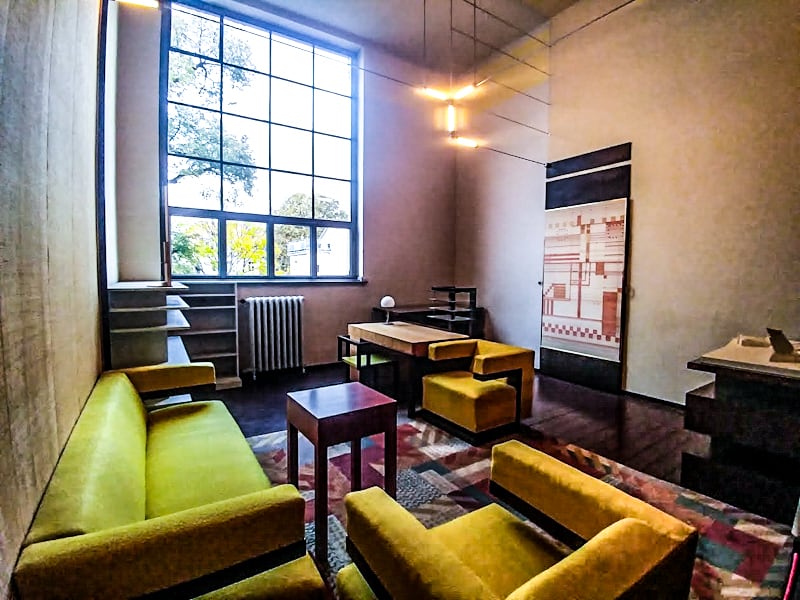
Looking like it could have been built yesterday, the revolutionary bright, airy, and spacious UNESCO protected abode with its typical dove-white exterior and lofty ideals had original Marcel Breuer pieces in its modular rooms.
The glimpse let me imagine living Bauhaus in the middle of this big new future-forward idea.
“It was a time when individuals were rediscovering themselves globally, experimenting with philosophies, approaches towards life, and purpose,” Jayne continued.
The Weimar school was closed by its founders as a right-wing conservative government came into power, controlling funding in 1924, but it was soon reestablished in Dessau.
Digital Bauhaus
One afternoon in Karlsruhe, one of the largest tech cities in Europe, my colleagues and I spent the day at ZKM | Center for Art and Media, an interactive Mecca of multi-media and digital arts.
Conceived in 1989 by founding director Heinrich Klotzwith, the inexorable union of classic arts with the digital age has brought “philosophical themes involving social change, innovations in communication, expression, and a basic conceptual understanding of the world …it’s about using technology to show the world, but also create it” our ZKM guide, Moritz Thinnes, explained.
On the cutting edge of the tech-heavy museum wave that is trending globally, TKZ’s highly provocative interactive cyber-space of ideas is housed within the walls of a renovated weapons and munitions factory circa 1915. The forward-thinking art school attached to the reinvented structure is integral, with year-round collaborations abound.
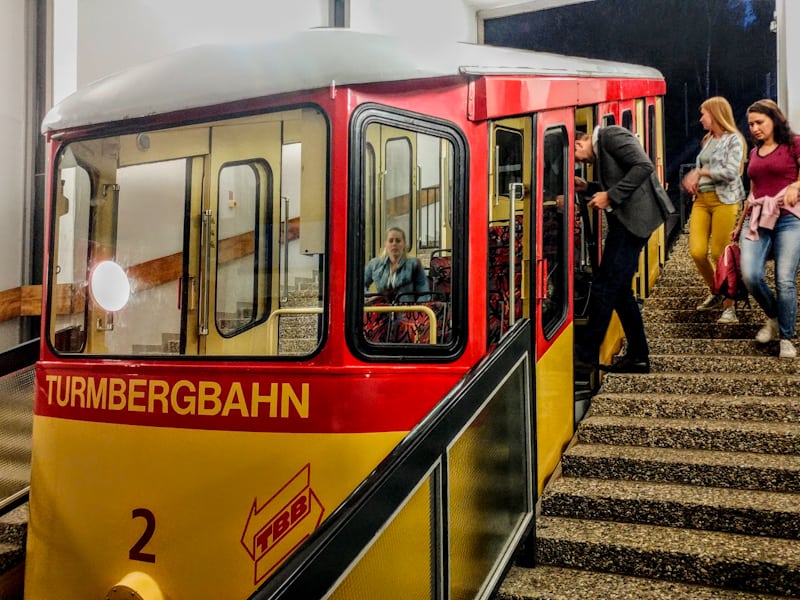
The breadth of ideas within the extensive multi-media mash-up such as the recent Digital Bauhaus, are meditations of social perspectives.
Some are more playful than others, but they’re smart and progressive, indeed. Like the slippery slope of invasive tech we see every day now, one exhibit can read you like a barcode and display your personal stats through the corridor. You’ve been warned.
Culinary Karlsruhe
As we rose up to the castle ruins on the nostalgic old-school funicular just outside of Karlsruhe in Turmberg, stunning views stretched all the way to the French Alps.
Once on top, a dinner commenced with colleagues and locals at diversely decadent Anders auf dem Turmberg where my compatriot, Todd, ignited a conversation about the true meaning of the word weltschmerz as dry Rieslings flowed.
Why doesn’t English have a word for a feeling of melancholy and world-weariness?
A highlight one afternoon in Karlsruhe was Erasmus with its Italian artisan craftsmanship. The restaurant operates inside an official Bauhaus structure next to Dammerstock, the first Bauhaus community settlement created by Gropius in 1929.
Every dish created by the affable native Italian, Marcello Gallotti, was a canvas. The diverse menu, shaped with German sommelier wife, Andrea, adheres to “Energetic sustainability in agriculture.”
Picture Perfect Erfurt
As soon as we arrived and checked into spacious and artsy Hotel Am Kaisersaal in historic picturesque Erfurt, Todd and I were instantly inspired to explore the nooks of this quaint village beloved by artists and intellectuals through centuries. It’s easy to understand the attraction for today’s university students.

An accessible hub ideal for walking or biking, we whisked through the bustling specialty shops, bakeries, and holiday tchotchke boutiques of Erfurt, crossing the Krämerbrücke (Merchant’s Bridge) with its medieval houses above the Gera River.
We got a kick out of the ice-cream happy-hour scene at shops that feature creative regional flavors. And before long we landed at Zum Golden Schwan for some German flavors of our own. And beer, naturally.
Anger Museum
While in Erfurt, we visited the Angermuseum for a mind-blowing tour with Patrick Rössler, author and professor at the University of Erfurt. He has curated several exhibitions on the Bauhaus, including Bauhaus publication Die Neue Linie.
“The propaganda, printed mainly for international audiences, was to show how liberal Germany was. But it wasn’t at all,” Rössler pointed out while walking us through an exclusive peek at his fascinating collection of German and international journals from the 1917 to 1945 interwar period with an extremely intense focus of the concurrent rise of Nazi-ism.
The press documentation of one of the most pivotal points in our time – as it happened, contributing to it – was unique in itself.
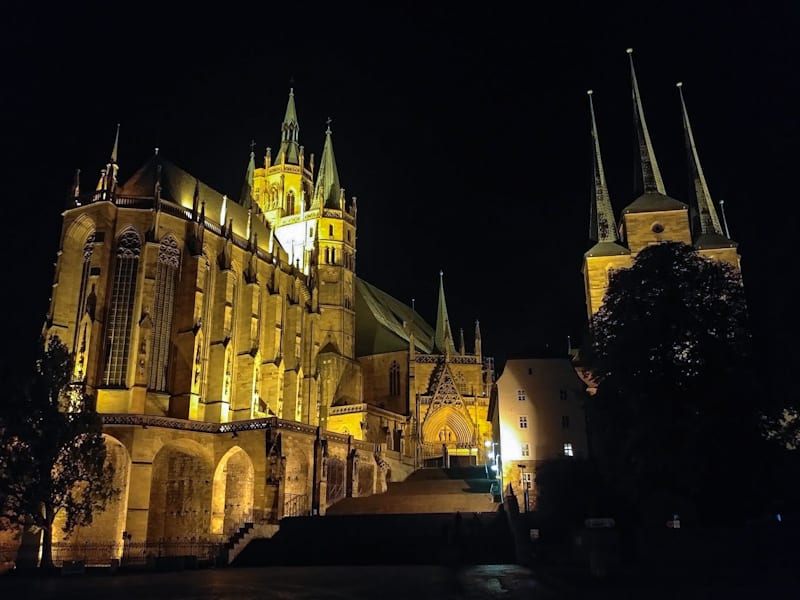
Wandering the small streets led us to the tucked away Old Synagogue of Erfurt, circa 1100. It was once a respite during the 1349 pogroms. The structure is also unique in that it eluded destruction by the Nazis. It now houses artifacts of Medieval German Jewish culture. Also on our walkabout was a peek at former St. Augustine’s Monastery of Protestant reform leader Martin Luther.
Masters in Dessau
Moving on to set up camp in Dessau, we visited the relocated Bauhaus school – often referred to as the factory – which was built in 1926. Its iconic architecture features its innovative designs that were even more developed than the Weimar school with uniform clean lines, simplistic steel frames, and those floating balconies. Tours are offered throughout the year.
The new state-of-the-art interactive Bauhaus Museum in Dessau can make you a master in Bauhaus studies. The meticulous exhibits housed throughout the monochrome interiors are complete with a vast collection of archival materials and treasures of Bauhaus’ heyday.
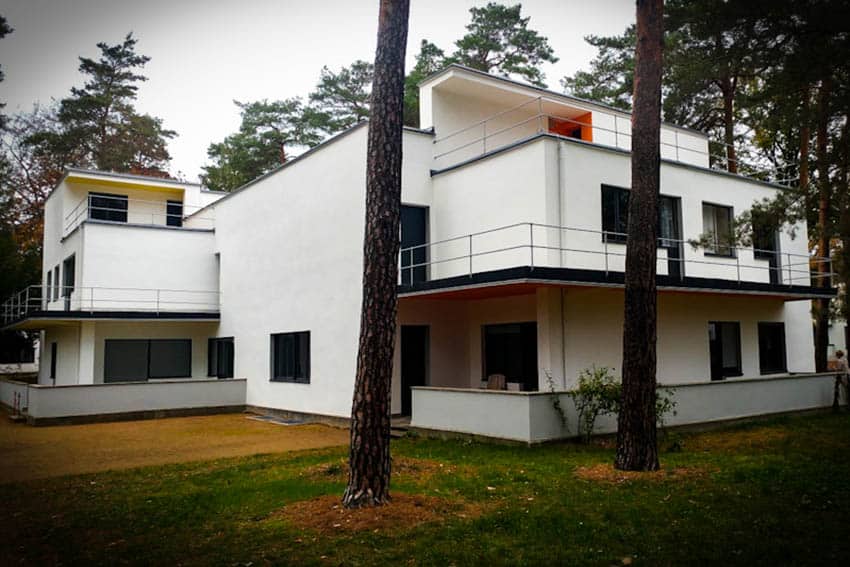
Bauhaus’ professors Lyonel Feininger, Wassily Kandinsky, and Paul Klee — all part of Hitler’s unsuccessful attempted stolen degenerate art exhibits –lived by the school in the Master’s Houses in a nearby complex, now a UNESCO site.
Snooping inside Kandinsky’s house, I began to see where some of the broader evolution or cracks in the Bauhaus way may have begun; maybe a little more flexibility instead of rigid totalitarian rules.
Allowances for modifications seemed evident in the masters’ houses. A little more flair was popping up, a little more panache, even though Gropius was said to have only tolerated Kandinky’s pretty little flower garden.
“It was all really a big experiment,” I recalled Jayne suggesting in Weimar, as we enjoyed our late-night cocktail at a local Cuban place after kebab in Dessau.
Somehow that thought adds some perspective to it all.
- JAMNOLA and Sazerac House: Celebrate New Orleans - July 30, 2022
- New Orleans’ High-tech World War II Museum - July 23, 2022
- Montreal: Eclectic Arts and Culture - May 9, 2022




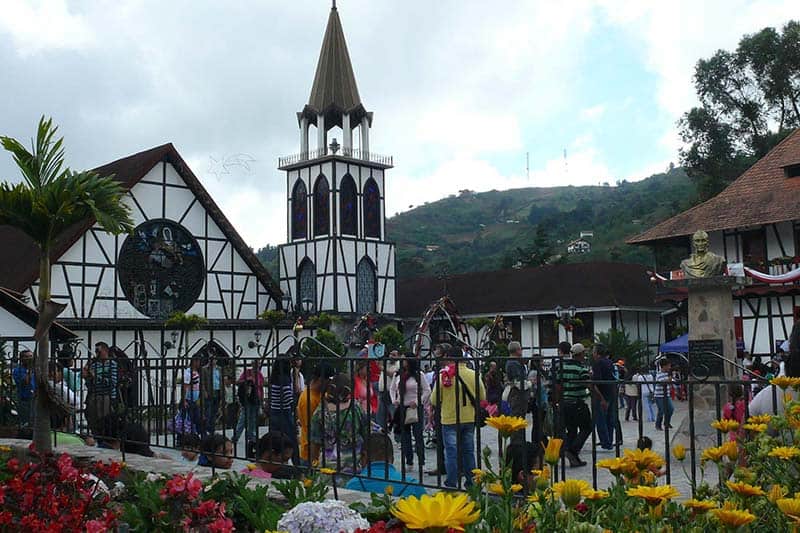

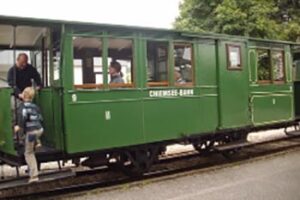
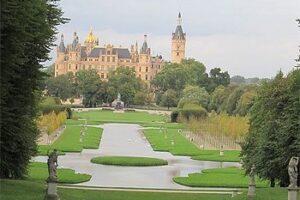
Your pieces are always so intriguing. Wiemar and Erfurt sound very cool, maybe doing this trip by rail is an option instead of driving?